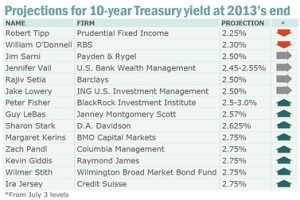Bad medicine: Costs, ignorance plague health insurance users
Dan Mangan | @_DanMangan
A large minority of people who have health insurance aren’t sure what’s covered by their plans.
And too many people with insurance are still afraid to use it because of worries about the costs they believe they will face from going to the doctor—despite the fact that a sizable fraction of them have a chronic condition, according to the results of a new survey.
All of those findings, outlined in a survey released Thursday by SCIO Health Analytics, are a worrisome counterpoint to the fact that many previously uninsured Americans are now getting health coverage due to provisions of the Affordable Care Act.
The results suggest that the benefits of providing people with health coverage are lessened to a certain degree by people not using that coverage correctly, and thus incurring unnecessary health costs down the road.
“These findings are particularly relevant at this time as millions of Americans are once again deciding their annual health-care benefit options through open enrollment,” said Siva Namasivayam, CEO of SCIO Health Analytics, whose customers included major insurers, pharmacy benefit managers and other health-care organizations.
“While Americans are spending time researching health plans, the survey reveals a significant knowledge gap in the specifics of their health-care options that may lead to unnecessary risks and costs,” Namasivayam said.
SCIO’s survey was conducted online by Harris Poll, which questioned more than 2,000 people age 18 and older, 1,872 of whom reported having health insurance at the time. The survey was taken about two weeks before open enrollment began on government-run Obamacare health insurance marketplaces.
The poll found that 38 percent of respondents lack a good understanding of the health services covered by their current insurance plan. That is the equivalent to some 84 million Americans. Young adults were almost twice as likely as adults age 65 and older to say they didn’t have a good understanding of their plan’s scope, according to the survey.
The poll also found that 20 percent of respondents said they had “avoided visiting a doctor for a general health concern within the past 12 months because of cost concerns.” Men were significantly more likely to avoid doctors’ visits because of cost worries than women.
SCIO noted that about half of U.S. adults have at least one chronic condition, such as heart disease, asthma or diabetes. The findings suggest that as many as 16 million adults with chronic conditions who could benefit from health-care treatment have skipped going to the doctor because they are worried about cost.
Given the fact that “treatment costs for Americans with chronic conditions are already around $277 billion annually,” the company said, if people avoid getting treatment for them, there are increased risks of complications, emergency room visits, hospitalizations and other consequences “that could potentially drive health-care costs even higher.”
Those worries are not necessarily based on a firm understanding of the costs, the poll found.
Almost half of the respondents in the survey, 44 percent, did not know what costs they would incur out-of-pocket for prescriptions drugs, such as co-pays, as opposed to what would be covered by their insurance plans.
And more than 61 percent of respondents said they did not know the costs they would face if they sought treatment from an urgent care or walk-in clinic facility.
Namasivayam told CNBC that his company’s customers were “definitely worried” even before the survey that newly insured people and others with low-levels of health-care literacy would be making poor decisions related to their health.
“It’s big time,” Namasivayam said of those concerns. “Because you now cost more [to insurers]. You are delaying the inevitable.”
“The prevention costs and the costs of taking good care of themselves is actually less than the person ending up in the ER 12 or 24 months down the road,” he said. “They are going to cost you maybe five to 10 times more than the cost of prevention and the cost of care.”
Namasivayam spoke Wednesday, hours after the Obama administration had announced that 7.15 million people have already enrolled in insurance effective this year on HealthCare.gov, the federally run marketplace that serves 37 states. That pace suggests that 10 million or more people will be enrolled nationally by the close of enrollment Feb. 15.
“I think that people are signing up, but people are signing up without having [a] clue about what they’re getting into,” he said. “The whole communication and literacy issue is a major hurdle. … Are you telling them what they need to know? Are you really driving them to be healthy?”
The enrollment surge and the reduction in the numbers of uninsured people nationally “could be a short-term gain,” Namasivayam said.
“But we may be paying in the long term if that literacy is not taken to the next step,” he said.
Namasivayam said he didn’t fault insured people for having difficulty figuring out their health-care plans, which he noted includes terms like out-of-pocket costs, co-insurance and co-payments are part of an often-complicated formula for determining what share of medical services are the responsibility of the health plan versus the customer.
“You almost need a Ph.D. in health-care economics to understand all this mumbo-jumbo,” he said.
While the media has paid significant attention to Obamacare, particularly during its first enrollment season last year, that hasn’t translated into widespread understanding of the health-care system, according to the survey’s results.
Sixty percent reported that they do not have a better grasp of how the health-care system works despite that coverage.


